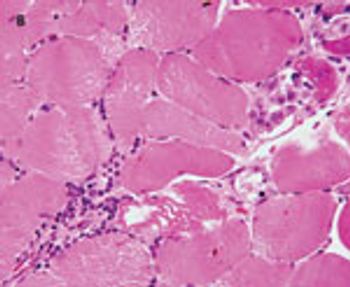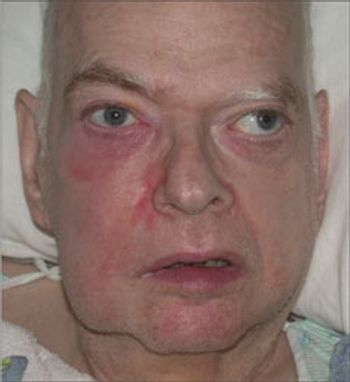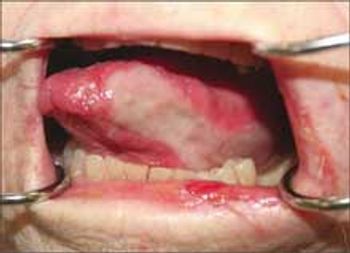
Human infections with a novel influenza A (H1N1) virus were first identified in April 2009, with cases in the United States and Mexico. The epidemiology and clinical presentations of these infections are under investigation.

Human infections with a novel influenza A (H1N1) virus were first identified in April 2009, with cases in the United States and Mexico. The epidemiology and clinical presentations of these infections are under investigation.

The recent report on an HIV-positive cardiothoracic surgeon in Israel has offered a contemporary perspective on the risks of transmission of HIV in health care settings, specifically surgical settings.

For 2 weeks, a 52-year-old man had progressive fatigue and myalgias. On the morning of presentation, he could not walk. He took no medications but reported chronic, intermittent use of alcohol, intranasal cocaine, and marijuana. He had ingested alcohol 2 weeks earlier and had used cocaine 3 days earlier. Vital signs were normal. The patient had bilateral upper and lower extremity weakness. The proximal muscle groups were affected to a greater degree, with 2/5 strength in the shoulder and hip girdles bilaterally compared with 4/5 strength distally. He had significant difficulty in raising himself to a seated position and when attempting to stand. Results of a complete blood cell count and basic chemistry panel were normal. Serum creatine kinase (CK) was mildly elevated at 9030 U/L. Urinalysis showed 3+ blood, with coarse granular casts but no red blood cells.

If Shakespeare were alive, he would urge caution regarding the “Ides of Influenza.” Recent publicity about global influenza, a result of both potential and real avian and swine flu epidemics, has led to a plethora of theories as well as alarm. How can the primary care practitioner answer questions, educate, prepare, and alleviate anxiety?

If Shakespeare were alive, he would urge caution regarding the “Ides of Influenza.” Recent publicity about global influenza, a result of both potential and real avian and swine flu epidemics, has led to a plethora of theories as well as alarm.

For 1 week, a 77-year-old man had a fever and a tender, nonpruritic rash on both palms (Figure 1) and on the anterior aspect of both knees (Figure 2). Two weeks earlier, he had hives, which ameliorated after a 10-day course of cetirizine and a tapering course of prednisone. He also had headaches almost daily for the previous 6 to 8 weeks.

Here we provide a list of questions with links that can help you respond to patients who may be asking you about H1N1 virus infection (swine flu). Topics include travel restrictions and recommendations for persons with chronic disorders.

On the hundredth day of the new administration, the President’s campaign promise of health care reform looks less like a gamble and more like a sure bet. But are policymakers throwing down the deed to the ranch?

Medicare Advantage (MA) plans will feel a major effect next year from the switchover from the Bush administration to the Obama administration. One of the first actions taken by President Barack Obama-just 2 days after his inauguration-was to revoke the 2010 draft Call Letter that the Centers for Medicare & Medicaid Services (CMS) had issued for MA plans. The new draft Call Letter suggests harsher rules and more oversight in a number of specific areas.

Sometimes we try to distill long experience into words, whether aphorisms or full paragraphs. Rilke’s wonderful prose poem expresses this very well in the part that begins, “For the sake of a single verse, one must see many cities, men and things. . . . ”1 While medicine has only some features in common with poetry, what reverberates is the wish to impart an affecting draught of beauty or wisdom or insight, in the case of poetry, after many years and decades of immersion in life; and I here offer some fruits of long observation and participation “hip deep” in clinical care and in the teaching of residents.

A 50-year-old woman presents to the emergency department with severe dizziness, weakness, and dyspnea of 1 week’s duration. Ten days earlier, an upper respiratory tract infection (URTI) was diagnosed; over-the-counter cough syrup and acetaminophen were prescribed. However, the patient’s condition has steadily deteriorated since then. In addition, her urine has darkened over the past few days.

A 76-year-old man is seen because of redness below the right eye. Has long-standing “lazy eye” on the left, which is chronically deviated outward. Has lived in nursing home for some years due to self-care deficit from memory loss. No recent eye surgery, conjunctivitis, sinus infection, or periocular trauma.

A 51-year-old man is admitted to the hospital with painful ulcers on both lower extremities, severe anemia, and a 45-kg (100-lb) weight loss over the past year. Pain from the ulcers prevents him from walking. The ulcers developed about 5 years earlier, as a result of his wearing high boots for work; they began as small sores and grew over time.

A 30-year-old man with a 15 packyear smoking history presented for a follow-up evaluation of an asymptomatic whitish lesion on the tongue of 4 months’ duration. The lesion had not responded to oral therapy with either nystatin or fluconazole. The patient was distressed about the lesion’s appearance and his inability to remove it with a toothbrush.

An 89-year-old woman is seen because of a white area on the tongue. She has been hospitalized on a behavioral health unit for 2 weeks; 1 day ago, enoxaparin was begun for a new left leg deep venous thrombosis. Recent antibiotic therapy for a urinary tract infection; candidal vulvitis followed and was treated with topical clotrimazole. Has penicillin allergy.

The patient has a small-fiber sensory neuropathy that is managed with lamotrigine. She is a physical therapy student who has frequent patient contact. She drinks alcohol occasionally but denies smoking and illicit drug use; she says she is not sexually active.

Methicillin-resistant Staphylococcus aureus (MRSA) was once considered a strictly nosocomial pathogen. Over the past decade, however, MRSA has emerged as a prominent cause of community-associated infections in both adults and children. Although community-associated MRSA strains occasionally cause severe invasive infections, they are most frequently isolated from patients with skin and soft tissue infections.

A 47-year-old Hispanic woman with severe headaches of 1 month’s duration presents to the emergency department (ED). The pain encompasses the entire head, is constant and crushing (10 on a scale of 1 to 10), and has progressively worsened.

A 36-year-old man presents to the emergency department (ED) after a single tonic-clonic seizure. He has a history of numerous male sexual contacts. HIV infection was diagnosed 5 months earlier. At that time his CD4+ cell count was 66/μL and his HIV RNA level was 20,000 copies/mL.

An 84-year-old Ethiopian woman presented with tender, violaceous, nonblanching nodules that had coalesced into plaques on the soles of both of her feet over the past 3 months. Similar discrete nodules were found on the dorsal aspect of her right wrist.

For 1 month, a 66-year-old man had had an asymptomatic lesion on the dorsum of his left hand. The flesh-colored, dome-shaped, maroon-crusted lesion measured 0.7 cm and was located over the fourth knuckle. The patient had chronic obstructive pulmonary disease but was otherwise in good health. He was seronegative for HIV.

A 59-year-old woman presents with right-sided, nonradiating, “aching” chest pain that has been continuous and increasing in severity for the past 3 days. It began as a tightness that gradually became more painful; it is aggravated by palpation and movement and has not been relieved by acetaminophen.

A 46-year-old man with AIDS (CD4+ cell count, 150/μL) presented with a painful nodular lesion on the plantar surface of his right foot. The lesion had appeared 1 month earlier as a painless, 1-cm, raised, reddish purple nodule and had progressively enlarged to 5 cm. Six months earlier, the patient had cryosurgery to remove a similar, larger lesion on the posterior aspect of his right midcalf.

Over the past 4 decades, our understanding of the role of elevated cholesterol in cardiovascular disease (CVD) has undergone radical change. During that time, we have moved from a belief that cholesterol does not matter and that atherosclerosis is an irreversible process to a strong conviction that treating elevated cholesterol, especially elevated low-density lipoprotein cholesterol (LDL-C), can slow and perhaps halt the progression of atherosclerosis. But it has been a slow process for several reasons. In the 1960s, the Framingham investigators demonstrated that elevated serum cholesterol is a risk factor for CVD.1

Together the spondyloarthropathies form a group of overlapping chronic inflammatory rheumatologic diseases that show a predilection for involvement of the axial skeleton, entheses (bony insertions of = ligaments and tendons), and peripheral joints. They also may involve extraskeletal structures, especially the eyes, lungs, skin, and GI tract.